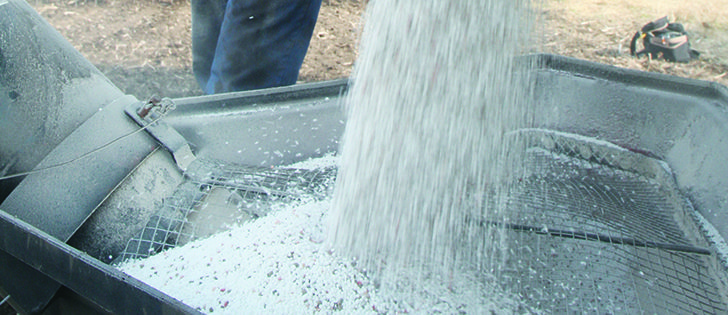Shipments behind Farmers advised to make fertilizer purchases early as a spring time shortfall is projected
A bumper crop filling all available bin space on most farms might prompt producers to put off laying in a supply of fertilizer.
However, Dean Anderson, regional sales manager for Yara Canada at Belle Plaine, Sask., warns farmers they might not be able to buy what they need if they wait too long.
“The advice I give to my family members farming is I would not wait till spring to buy my fertilizer, let alone take it home, not when I have a seeding window of 10 to 12 days. If that is my goal, I’d be positioned.”
Read Also

U.S. market can’t easily be replaced
The deputy chief economist of Farm Credit Canada says 92 per cent of Canada’s total exports to the U.S. went into the country duty-free in June.
Anderson said all indications are that fertilizer demand for next crop will be as large as it was last spring and perhaps greater, given the amount of nutrients that the record crop pulled from the soil.
Western Canadian manufacturers shipped 6.1 million tonnes of fertilizer to farmers last year, up 500,000 tonnes over the previous year.
Of that, 2.43 million tonnes was urea nitrogen.
Manufacturers must ship through the year to move that quantity, and last year they were posting record movement each quarter to meet the need.
However, the industry moved only 804,000 tonnes in the June-September period, the first quarter of the fertilizer year, down 21 percent from the same quarter last year. The numbers for the second quarter are not yet available, but Anderson is sure they are also behind last year’s pace.
He said starting the race that far behind will make it almost impossible to catch up.
“On urea, last year we had record Q1, Q2 and Q3 shipping and we matched off (the previous year’s record) Q4 shipping to hit that record 2.435 million tonnes of urea,” he said.
“Now, we are not breaking records, we are behind.… If everyone waits until spring time, it is not going to be a happy time.… I could be wrong. It is a resilient industry, but it is not a magic spout at the retailer where fertilizer always comes out. Logistics will be an issue.”
The story in phosphate fertilizer is similar to urea.
Slow fertilizer sales over the summer were not a result of production or logistical problems. Rather, farmers were comfortable that fertilizer prices were low relative to recent history, and they hoped they might fall further. As well, bin space was not available after the bumper crop was harvested.
Those who bought fertilizer early in the previous year might have paid more than those who waited.
However, Anderson said early buyers did not face delays, which is invaluable in the short seeding window.
He also said that after falling through the summer, urea prices at the port of New Orleans, which sets the benchmark for North American nitrogen prices, has been rising since mid-October and jumped significantly in the first few days of this month.
“In my view, the bottom of the market is gone … in terms of nitrogen.”















